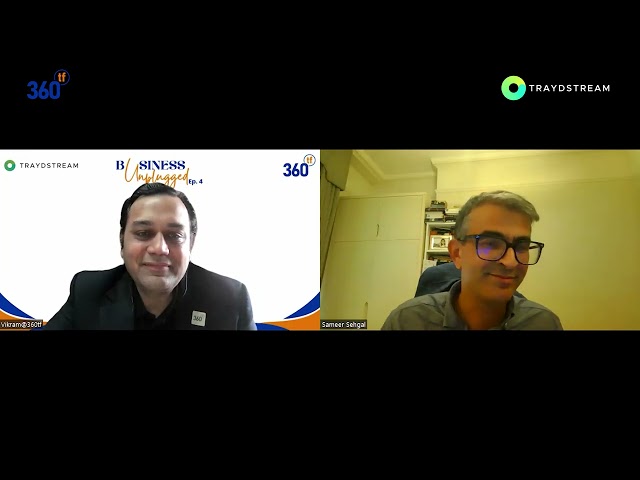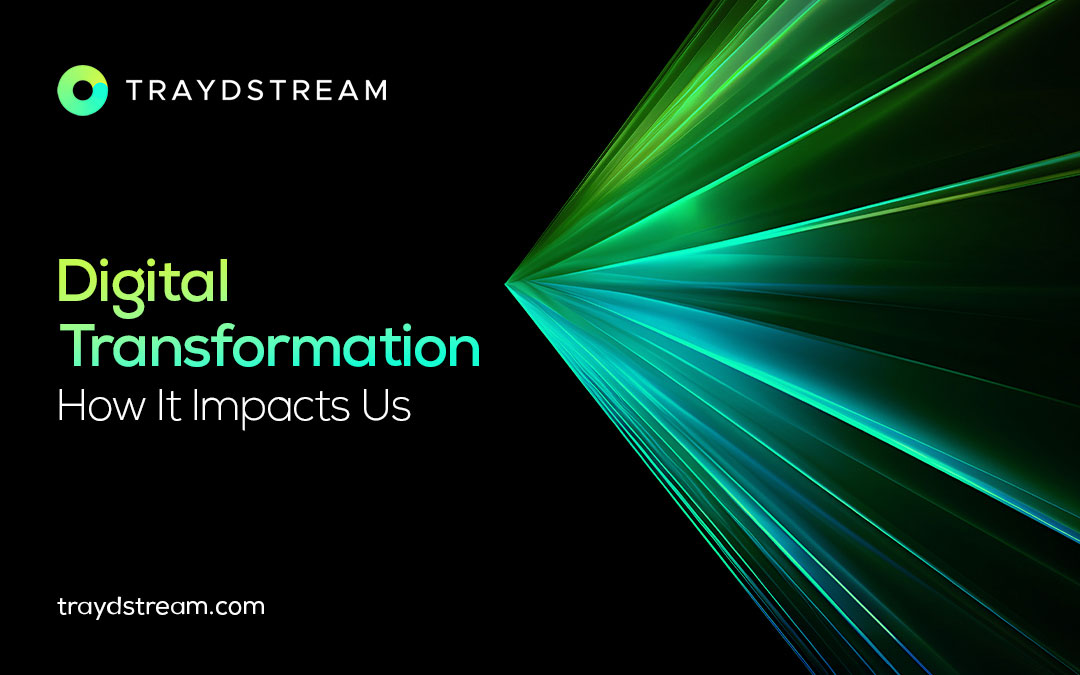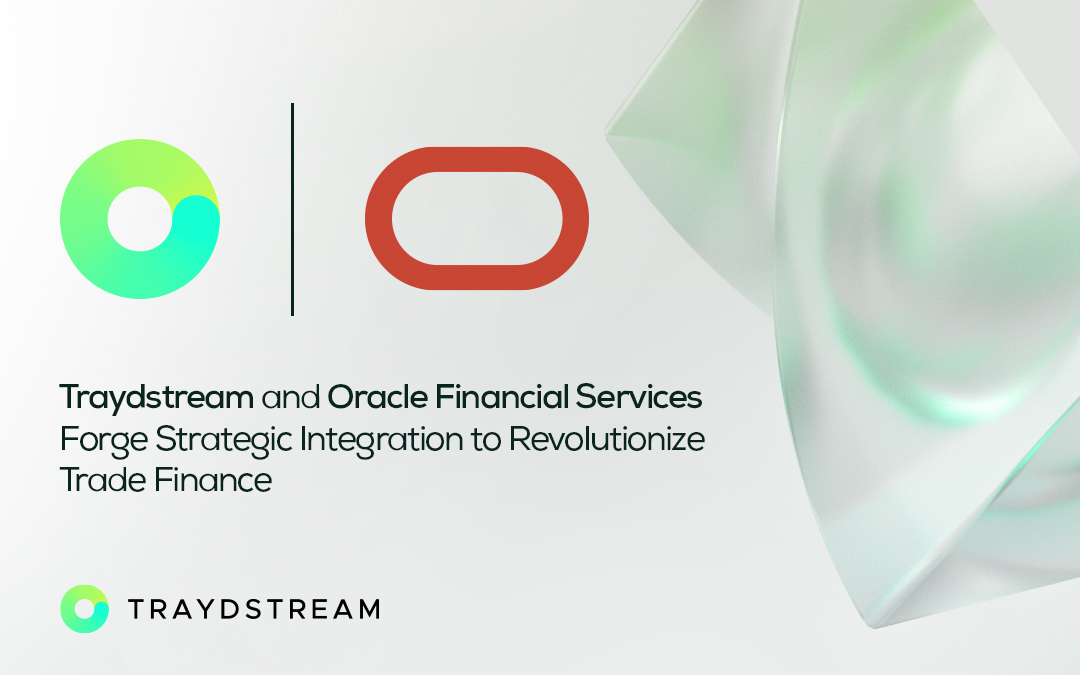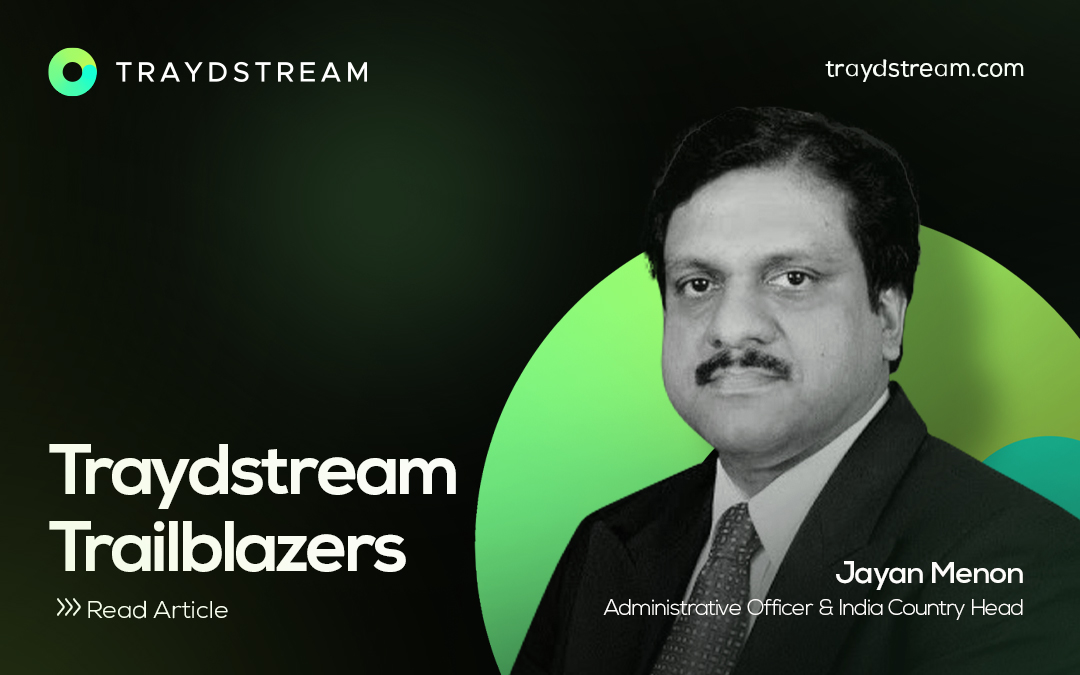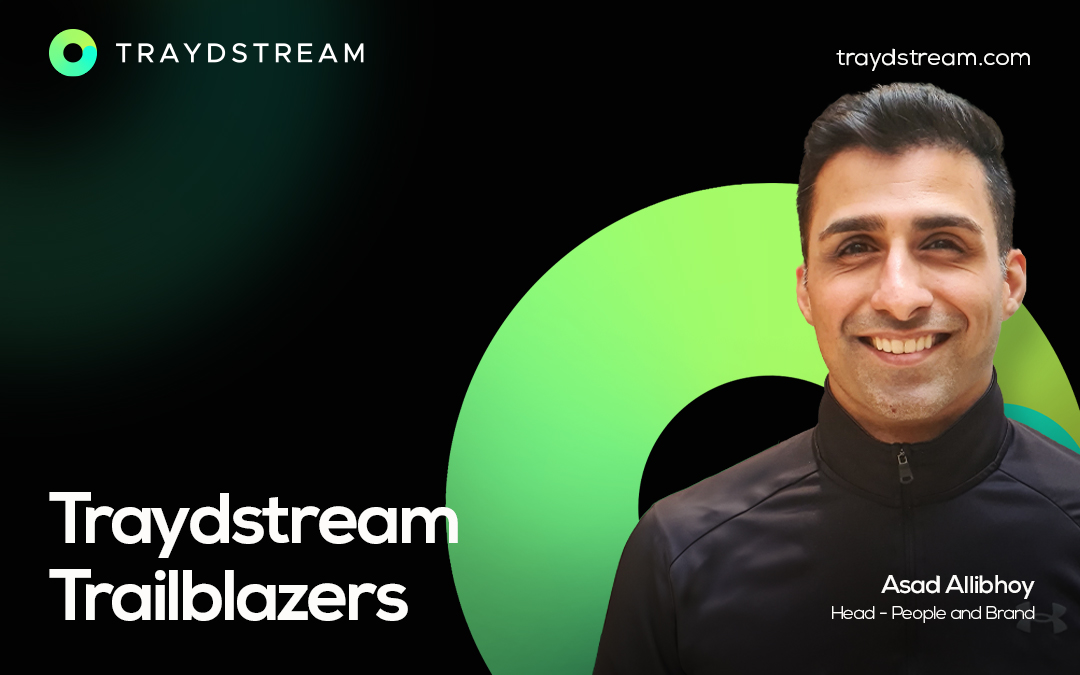
- What inspired you to join this company, and what challenges did you face in the early days?
It was the people. It was obvious from my first interactions with the people at Traydstream that there was something special in the recipe that combined all of these different people together. It didn’t matter which meeting room I sat in, with what team I was meeting, and at what level of the organization I was talking to – everyone had the hunger to improve the status quo, the humility to give and receive feedback and deal with setbacks, and the hard working nature to see the result through while supporting the people around them.
We didn’t have much in those early days. We didn’t even have a full staff list. We had to first create the vision of where we wanted to be, articulate that in some sort of attainable milestones over a 5 year period, and then put together the strategy, the tools, the frameworks, and the policies to manage all of the projects and processes around recruitment, engagement, performance management, and learning & development for about 40 people which has now grown to almost 250 in 13 different countries. This work is continuous, we can only improve on what we are already doing.
- What are some of the biggest lessons you’ve learned in this industry, and how have those lessons impacted the way you do business?
We don’t do business with companies. We do business with people. Which for me means, if you don’t understand people, then you don’t understand business. And it is scary to observe how common it is in finance and in engineering because the mind of the people who go into these industries is so technical, that sometimes it is easy to forget that the people who have to buy or build their service are human beings. And so, the ones who create life-long relationships. Deep, meaningful, trusting relationships. Are the ones who fundamentally understand, regardless of what you do – you’re in the people business.
The lessons that impacted me most were from leaders who taught me how to build a culture we can all be proud of. Your culture is the shared way you do things and often they are based on lessons that we’ve learned. And the lessons that we learned from the most are the ones that are seared in you. They come from trials and tribulations. They come from the most difficult times. It’s the way you rise to the occasion in the face of adversity. Your culture is the behaviours of the leaders that get mimicked down to every single person. Your culture is every time you choose to hire someone, or promote them, or let them go. It’s the way everyone does everything. And the way a leader designs a culture is not by writing out a list of values. It’s by leading by example every single day and taking a mental and psychological survey of everything that is happening and constantly shaping it. Like a Gardener! You don’t just allow the culture to happen. You design the culture. You have an idea of what you want to do. And you’re just constantly trimming the edges and getting this group together.
- What advice would you give to someone just starting in this field?
- Hard work and consistency are underrated. It’s important to be able to swing the bat hard for long hours but it’s about swinging over and over again to perfect your technique till you learn to hit it out of the park. Consistency gets you places; hard work makes it difficult for others to keep up.
- Optimize Learning over salary and role. A high salary is a byproduct of a valuable role. A valuable role is a byproduct of a valuable skillset. A valuable skillset is a byproduct of valuable learnings. So start by focusing on learning first.
- Build Skills that are rarely found together. Storytelling is a common skill, as is data analysis. But when you combine both – you’ve got an extremely rare and valuable skill set. They underpin every, single, aspect of the business.
- You gain confidence after doing something hard – not before. Too many people never try hard things because they think confidence is a precondition when in reality, it’s a side effect.
- What are some of the biggest trends you see shaping the future of the industry, and how is Traydstream positioning itself to stay ahead of the curve?
Trade finance is complex, manual, and largely paper based but there are plenty of areas within the world of trade that are already at different stages on the disruption curve.
Firstly, the accelerated adoption of digital technologies is revolutionizing traditional processes, leading to increased efficiency, transparency, and security across the trade finance ecosystem. Blockchain, artificial intelligence, and machine learning are slowly being introduced as integral tools in streamlining operations and reducing the risk associated with these traditionally manual processes. Also, regulatory changes and geopolitical shifts continue to impact the trade finance landscape, requiring organizations like us to stay agile and compliant amidst evolving regulations and geopolitical tensions.
At Traydstream, we recognize these trends and are opportunities and challenges that are strategically positioning ourselves to stay ahead of the curve. Our cutting-edge AI-powered platform is designed to address the evolving needs of the trade finance industry by offering advanced digitization, automation, and compliance solutions. By leveraging artificial intelligence and machine learning algorithms, we empower financial institutions and corporates to streamline their trade finance operations, enhance decision-making processes, and mitigate risks effectively.
To take things a step further, our platform is continuously updated to adapt to regulatory changes and geopolitical dynamics, ensuring our clients remain compliant and resilient in a rapidly changing and uncertain environment. We have successfully created an organically evolving ecosystem through continuous innovation, collaboration with industry partners, and a commitment to delivering value-driven solutions.
We are talking about a platform that is essential to bridge the time lag between a product’s shipment from one market and its arrival and inspection in another. Reducing this delay helps build trust and minimizes many of the vertical supply chain risks arising from such complex global transactions, such as a lack of timely payment, exchange rates and the deterioration or loss of goods and services. Traydstream has the capability to enable thousands of companies that may be otherwise considered too risky to link into expanding global value chains and contribute to global employment and productivity growth while breaking barriers to trade


